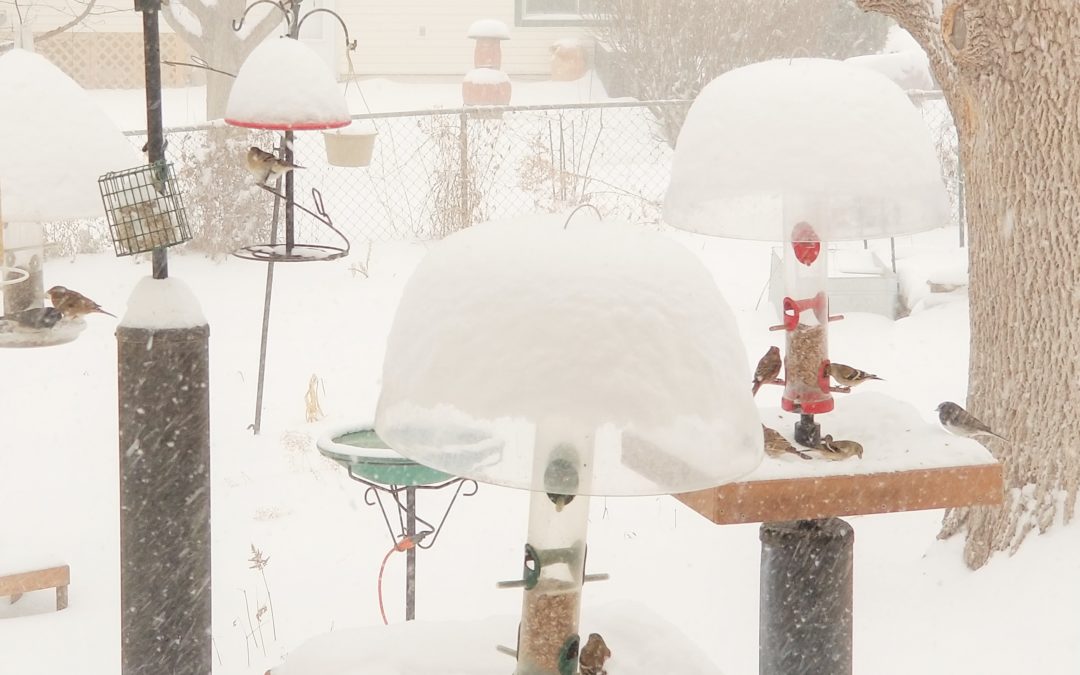In the cold of winter, there are many things you can do to help birds survive the season. Here are a few tips that are easy to implement.
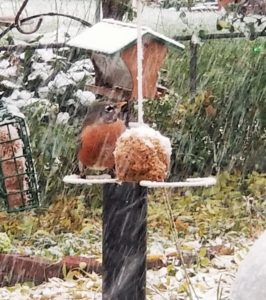
Birds use a lot of extra energy to keep warm in cold weather. Therefore, they must consume more calories than they do in warmer months. You can help by feeding high-fat foods such as suet, peanuts and seed blends high in black oil sunflower content. This will provide the energy boost they need to survive.
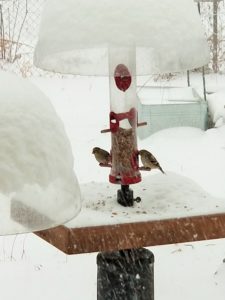
Unless raccoons frequent your yard, it is a good idea to fill your feeders in the evening to make sure food is available first thing in the morning for those early birds like cardinals and mourning doves. Most songbirds fill a special pouch in their esophagus with food to digest during the night. That is why you frequently see birds at your feeders as the sun sets.
It is not a good idea to feed bread to the birds in winter. Bread does not provide the proper nutrition or fat content necessary for birds to survive below-freezing temperatures.
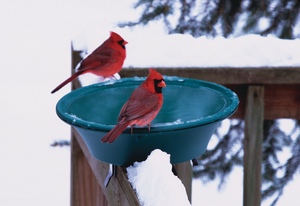
Water is important to birds in winter not only for drinking, but also for bathing. Most birds fluff out their feathers, creating air pockets between the feathers for insulation. Clean feathers are warmer feathers because they can trap air more efficiently. They are also more efficient for flying, so less energy is expended in flight. A heated birdbath that provides a source of open water will attract birds on even the coldest of days.
Some birds perch on one leg and draw the other up to their breast for warmth, alternating legs. Others seek the most sheltered areas they can find. Roosting boxes and nesting boxes give birds a dry place protected from the wind, to rest. Leaving these shelters out provides a haven from harsh winter conditions. Stands of tall grasses, brush piles, and evergreen trees offer birds a place to escape the wind and snow.
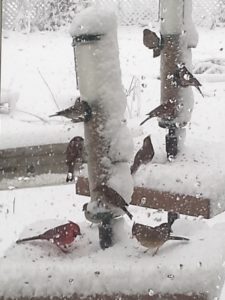
But birds, like humans, are creatures of habit, and bird banding studies have shown that many of our winter birds, such as juncos and native sparrows, utilize the same wintering location year after year. With a potential lifespan of over 10 years, it is likely that the junco gleaning millet or sunflowers off the ground below one of your feeders has spent many previous winters as your loyal backyard guest. And recent research shows that is only half the story!
These birds are not only loyal to a specific location, but also to a single feeder! This is why it takes birds awhile to adjust to new feeders in your yard. These studies also showed that once birds were accustomed to a specific feeder in a given location, the only time they abandoned their favorite feeder was during periods of cold weather when the feeder was placed in a location too exposed to the wind. So you can help protect your birds from the elements by locating your feeders in a sheltered location out of the wind. The east or southeast side of a house or near a row of trees, especially evergreens, is ideal.
Making your yard bird-friendly in cold weather helps birds survive our harsh winters. And you will be rewarded with colorful visitors all season long.

